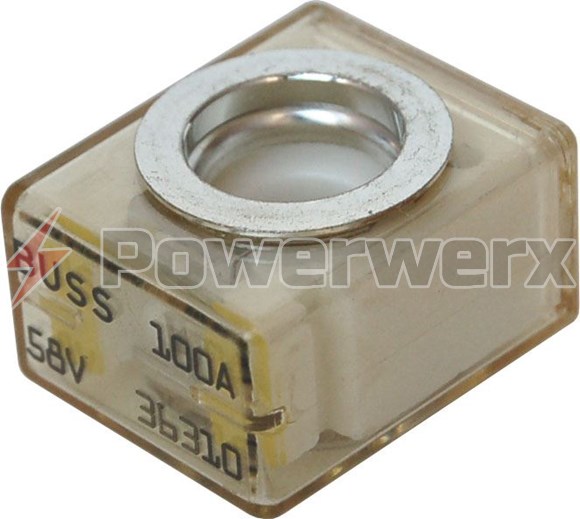With my setup (3x 100ah batteries) in 12v configuration and the 2000 watt inverter, what size fuse would you put on each battery between the bus bar? And what size wire would you use from the batteries to the bus bar?
My opinion -
Each BMS is 100amps max (but can spike higher momentarily, we plan on expected)
This from the windy nation welding wire chart - #6 will do the job with 115amps, but I would do #4 just for extra headroom at 150amps. Note this is a lot smaller than the 2/0 you originally listed because it is welding wire verse.
WindyNation's Power-Flex welding and battery cable is a highly flexible industrial-grade electrical cable. A high strand cable count combined with a soft, pliable EPDM insulation results in a flexible cable every time. Our cable is resistant to tears, cuts, abrasion, water moisture, and...
www.windynation.com

Fuses on battery post and bus bar end of battery wire - both 150amp - Type is MRBF.
If you only put a fuse at one end of the battery cable put it at the bus bar end. In the event of a short across the posts realize you are depending on the battery BMS to act as a fuse and it could just as easy be a short instead of an open. If you fuse at the post and at the bus bar end you are covered for all eventualities.
For the inverter - you are running 2000watts/12.8v = 156amps - I would use #2 wire for this.
You can upsize if you ever think you want to run 3000w in future = 234amps = 1/0 wire.
Note - I skip 1 awg because it isn't a standard size of welding/battery wire. If you move to a THHN or other wire type that is a different ampacity chart.
For the fuse I would use a 200amp class T fuse as close to the bus bar as you can get.
For all fuses - cheaper isn't better - many people recommend blue sea systems, but they are just releabled Eaton, Bussman, or littlefuse with a higher price -So order from someplace like powerex
Requires the use of terminal fuse blocks CBBF-MBC, BS5191, BS2151, BS5194 or BS5196. Provides high current protection in tight space locations. Ignition protected. 58V DC maximum voltage.

powerwerx.com
On all cable ends use rubber boots to cover the bolt heads. The bus bars should be the type with a cover over it or you need to do something to prevent a short between them and everything else.
Big note here - if you don't have a good hydraulic crimper (temco or other quality brand, NOT the $40 off amazon with the funky name) order the cables to length from windy nation with lugs already on them. You can generally get them cheaper direct verse the amazon store.

temcoindustrial.com
And don't use the chassis as a negative pole - run the correct size wire for everything. Using a chassis 'ground/negative' is old school from when vehicle lights were first added to cars and they wanted to save a few pennies and not run the second wire. It generally causes nothing but issues when used for that or anything else.
If you have ever chased wires on a vehicle pre-1970 you would know what I mean. Flip the turn signal and both side light up, loose negative to chassis wire. Put a new screw in or clean the connection and now the turn signal is bright. It didn't help that the brake light and turn signal light used a 1157 buld with two filaments in it tied together and in some vehicles they fiddled with the ground to decide which to light up.






